A fine piece of work: Bulgari and its landmark Octo Finissimo
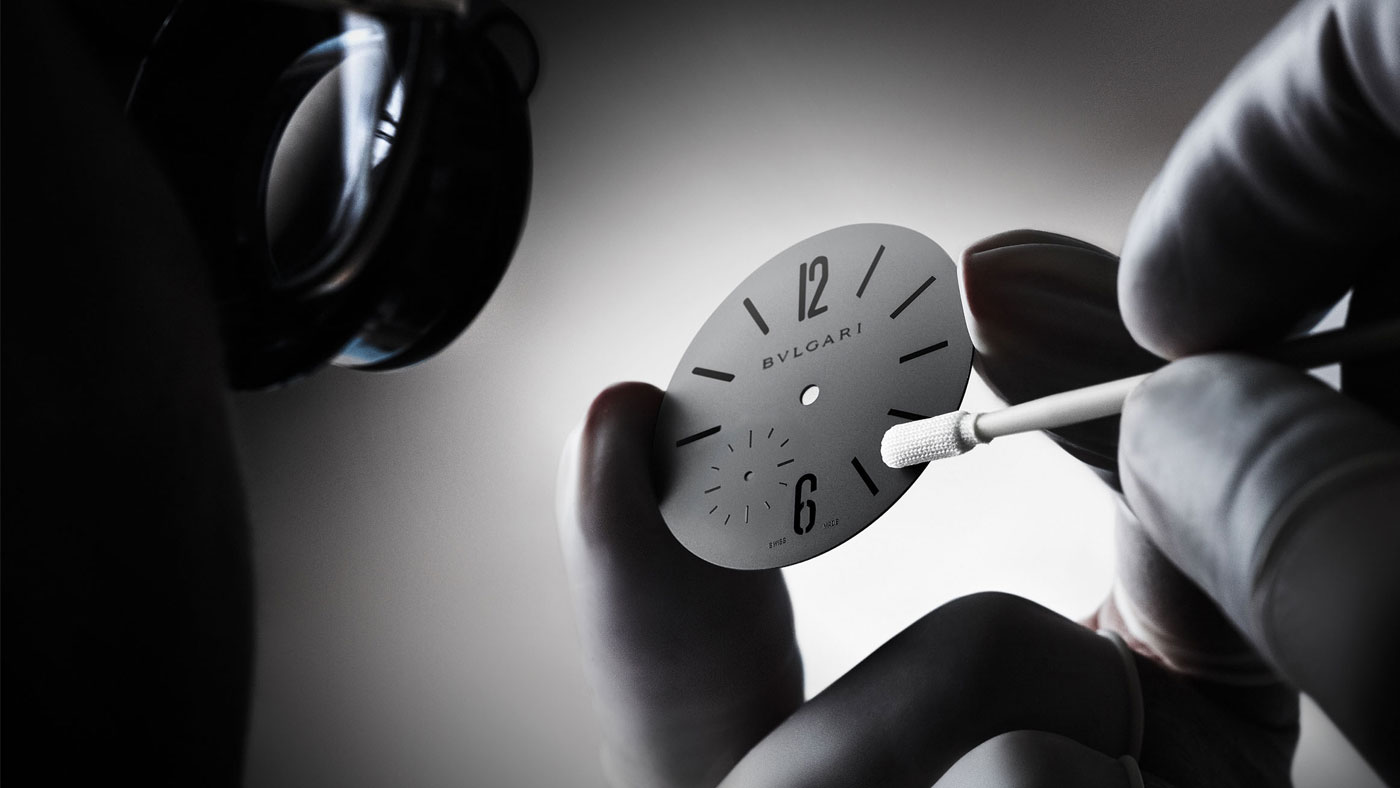
Purely as a watch brand, Bulgari has been easy to overlook: you’re more likely to associate the Italian maison with fine jewellery, perfumes or luxury hotels than with making timepieces. But don’t imagine the last of these is any kind of afterthought or sideline. Bulgari’s first wristwatch dates back to 1918, and although a proper subsidiary wasn’t established until 1980, the brand has a surprisingly rich heritage in watchmaking and has become a significant presence within the industry.
Bulgari’s rise was accelerated by the acquisition in 2000 of the brands Gérald Genta and Daniel Roth (GGDR), both highly regarded for their watch designs and expertise in high-end movements, as well as their significant manufacturing capabilities. This, and later acquisitions of dial and case-making facilities transformed the Italian brand into a full-service manufacture, providing it with the capacity and credibility to become a big player in Swiss watchmaking. Now Bulgari was no longer just a name on the dial – an important factor when competing with long-established brands.
Obviously, though, it’s the watches and not the capacity that really make the brand. This is where Bulgari’s management were particularly clever, incorporating the design templates that came with the GGDR purchase into those Bulgari was already known for, such as the Solotempo, but doing it so stealthily that the Genta and Roth names never entirely disappeared. This strategy maintained Bulgari’s place as a maker of haute-horlogerie timepieces (the brand still makes incredible automata watches such as the Caravaggio-inspired Il Giocatore Veneziano, which shows a figure playing the cup game), but there was still a perceptible gap between these watches and purer Bulgari designs such as the Diagono.
The Week
Escape your echo chamber. Get the facts behind the news, plus analysis from multiple perspectives.

Sign up for The Week's Free Newsletters
From our morning news briefing to a weekly Good News Newsletter, get the best of The Week delivered directly to your inbox.
From our morning news briefing to a weekly Good News Newsletter, get the best of The Week delivered directly to your inbox.
This gap was firmly closed when the new Octo was unveiled in 2011. A thorough – radical, even – update of an existing Gérald Genta design, it was intended, primarily, as a simple, everyday, time-only watch. Since then, the Octo – particularly in its ultra-thin Finissimo form – has become Bulgari’s signature watch. More than this, there’s every chance that the Octo Finissimo will become this decade’s iconic design, in the way that Audemars Piguet’s Royal Oak has come to stand for the 1970s, or that Porsche Design’s titanium chronograph is emblematic of the ’80s.
That’s quite a claim for any watch design, but the reception for the Finissimo over the last two years has been phenomenal, comfortably exceeding the brand’s hopes and expectations. Guido Terreni, the MD of Bulgari’s watchmaking division since 2009, admits the intentions were much more prosaic: “My first mandate was to complete the integration of GGDR into the Bulgari brand, and we needed to create a watch that married Bulgari’s aesthetic heritage with the expertise that came through GGDR. We took the existing Octo and refined it, making it more relevant to the time and our audience.”
Terreni’s design brief was then executed by his creative director, Fabrizio Buonamassa, who had arrived at Bulgari from the car industry in 2001 – time enough to become thoroughly versed in the minutiae of watch design. Buonamassa saw that the Octo, originally a vehicle for complicated watches, could be made more everyday by not only reducing the bulk, but also making a more refined play of the surfaces and angles – an approach that is even more effective in the ultra-thin Finissimo watches that came a few years later.
It’s in the Finissimo that the smart, discreet, eight-sided design, which combines square and circle in a unified form, most clearly shows its potential. By their nature, ultra-thin watches have little room for adornment, which forces designers into the most simplified expression of brand and identity. Almost inevitably, this means classic, round, conservative watches that are only differentiated through surface detail. The Finissimo, however, offers something different – less formal, more sophisticated, more stylish.
A free daily email with the biggest news stories of the day – and the best features from TheWeek.com
But it’s also a demonstration of Bulgari’s watchmaking capabilities: the case, which in the original Octo is made of three parts, has 110 faceted surfaces, each of which is polished by hand using contrasting techniques and is made by Bulgari at a dedicated case-making facility in Saignelégier, a tiny village near the French border. Given its complex shape and the need for micron levels of precision, it’s no surprise to discover that producing the case is an elaborate process: 18 operations alone go into milling the bezel of the Octo – the one part of the case that actually seems quite simple. Most of the work is done by banks of CNC machines (computerised machine tools), with blanks turned into cases through a long series of drilling, cutting and milling operations, and quality control inspections at every point, before the completed cases are taken in by a small army of highly skilled finishers to polish, sandblast or chamfer each facet individually.
Dials come from another facility, in La Chaux-de-Fonds, a city so important to watchmaking that, in 2009, UNESCO listed it as a World Heritage Site. Nestled in the Swiss Jura mountains, this site is where modern-day alchemists create sheens, textures and patterns of absolute precision and balance. Movements, meanwhile, come from Le Sentier in the Vallée de Joux, the epicentre of Swiss fine watchmaking. What’s striking about all of Bulgari’s facilities (including the assembly and administrative headquarters in Neuchâtel) is the collegiate and creative atmosphere. Credit for this goes mostly to Sr Terreni, but also to the comparatively small scale of each location: Bulgari is a relative minnow when compared with Vallée de Joux neighbours such as Jaeger-LeCoultre and Audemars Piguet.
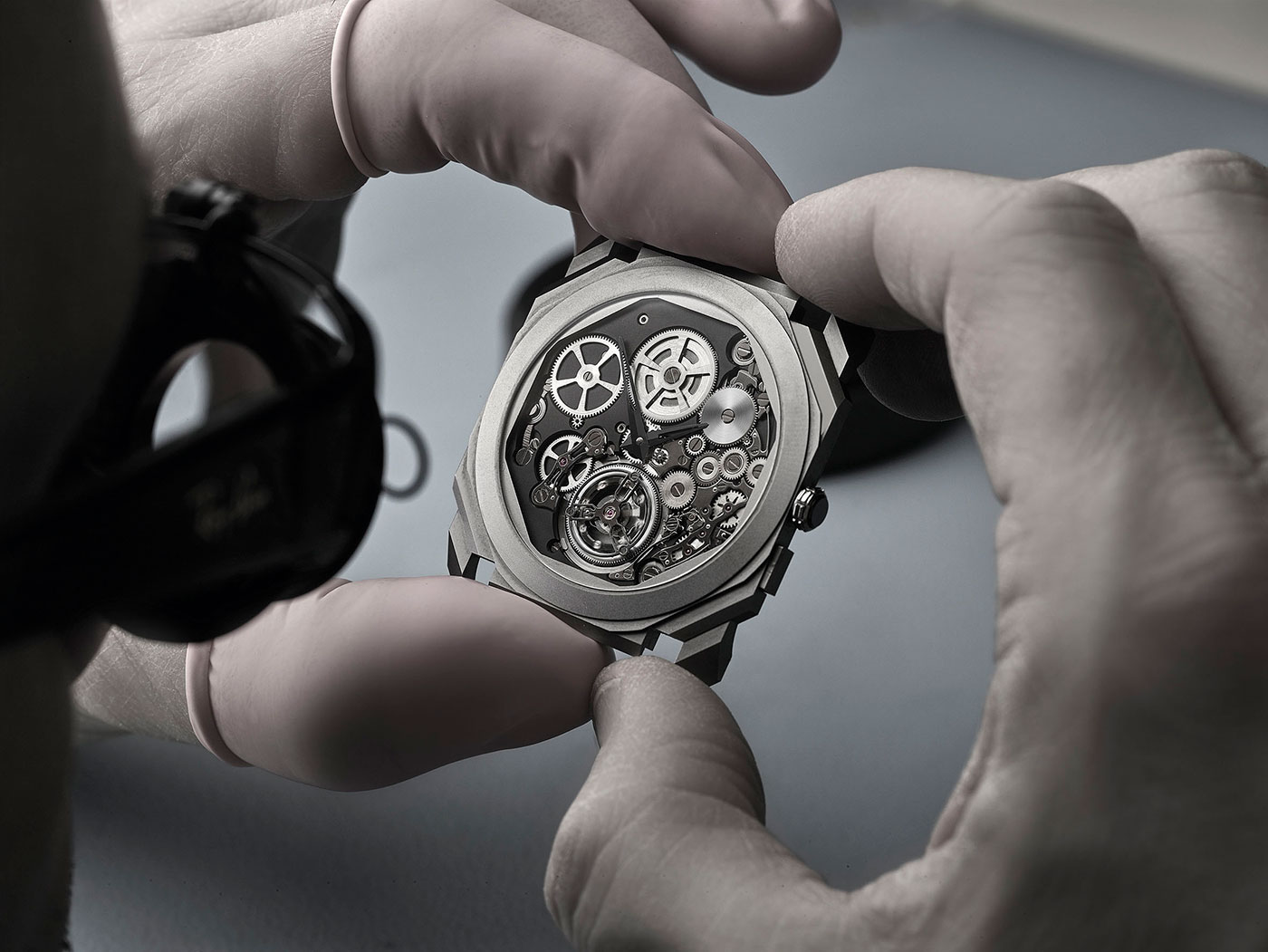
This, and the manner of the work mean that not only is there a comparative absence of repetitive activity, but, more usefully, everyone is involved in the development process. A good example of this is the transfer technique used for the hour markers on the Finissimo Automatic, the markers being so fine that the only way to handle them is by using a backing as if they were stickers.
While the Octo name was intended to denote simpler watches, Bulgari has also used the Octo Finissimo as a platform to show off the talent and expertise the brand has at its disposal. Ultra-thin watches are already thought of as ‘small complications’ because of the extra care needed to assemble them, but Bulgari chose to amplify the message by introducing the Finissimo first as a tourbillon and then as a barely believable minute repeater, before launching the automatic Solotempo. While these watches certainly reminded the world that Bulgari competes at the highest level in terms of fine watchmaking, the ‘daily wearable’ appeal of both the tourbillon and the minute repeater was the key message that Terreni wanted to get out. This wearability constraint is why the watches have been such a hit for the brand. As Buonamassa says, “Good design is about constraint, and those constraints drive the aesthetics. I might be inspired by a beautiful engine, or even by the Colosseum in Rome, but sometimes you can’t use those shapes to make a watch. So, inspiration has to be appropriate, and it has to make sense.”
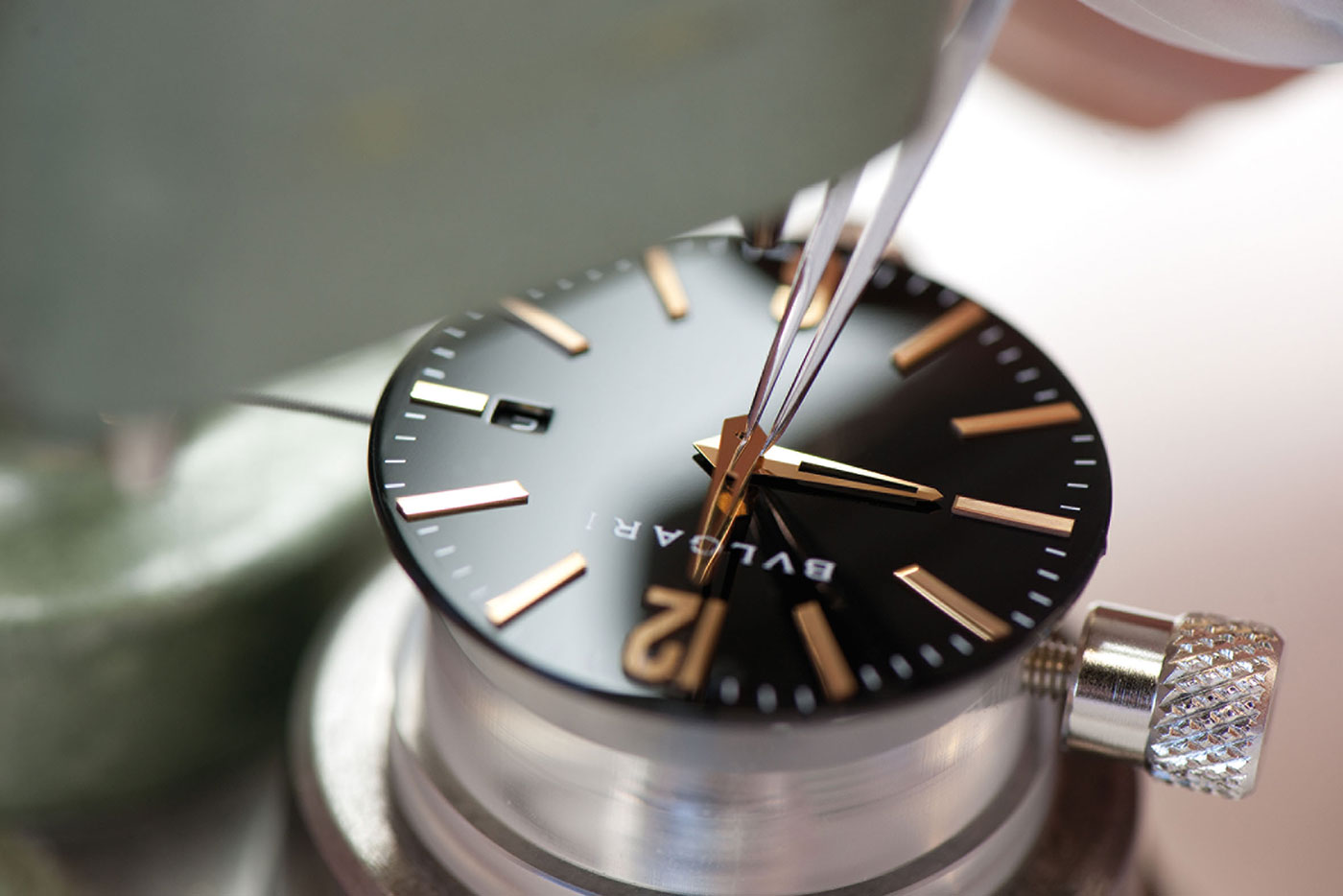
Terreni is conscious that the Finissimo is an icon in the making within watch design, and he admits that the brand will need to be extra careful in the way the design is developed over the next few years. “It has an honesty and a purity that we need to respect. You’ll see this in the way we use materials: the colours will come from them, with only the finish changing the surface appearance.” As the three automatic Finissimo watches shown at Basel this year demonstrate, this can still mean quite dramatic design.
Is Terreni right in thinking that the Finissimo will be lauded in the same way as the Royal Oak is, four decades after its first appearance? Almost certainly, in my opinion. It’s both a 21st century answer to Audemars Piguet’s creation and a riposte to the blandness and bulk of current smart watches; it shows how ultra-thin watches can be contemporary. What’s more, it wears incredibly comfortably and manages to match character with discretion.
-
 Would Europe defend Greenland from US aggression?
Would Europe defend Greenland from US aggression?Today’s Big Question ‘Mildness’ of EU pushback against Trump provocation ‘illustrates the bind Europe finds itself in’
-
 The rise of runcations
The rise of runcationsThe Week Recommends Lace up your running shoes and hit the trails on your next holiday
-
 Amorim follows Maresca out of Premier League after ‘awful’ season
Amorim follows Maresca out of Premier League after ‘awful’ seasonIn the Spotlight Manchester United head coach sacked after dismal results and outburst against leadership, echoing comments by Chelsea boss when he quit last week
-
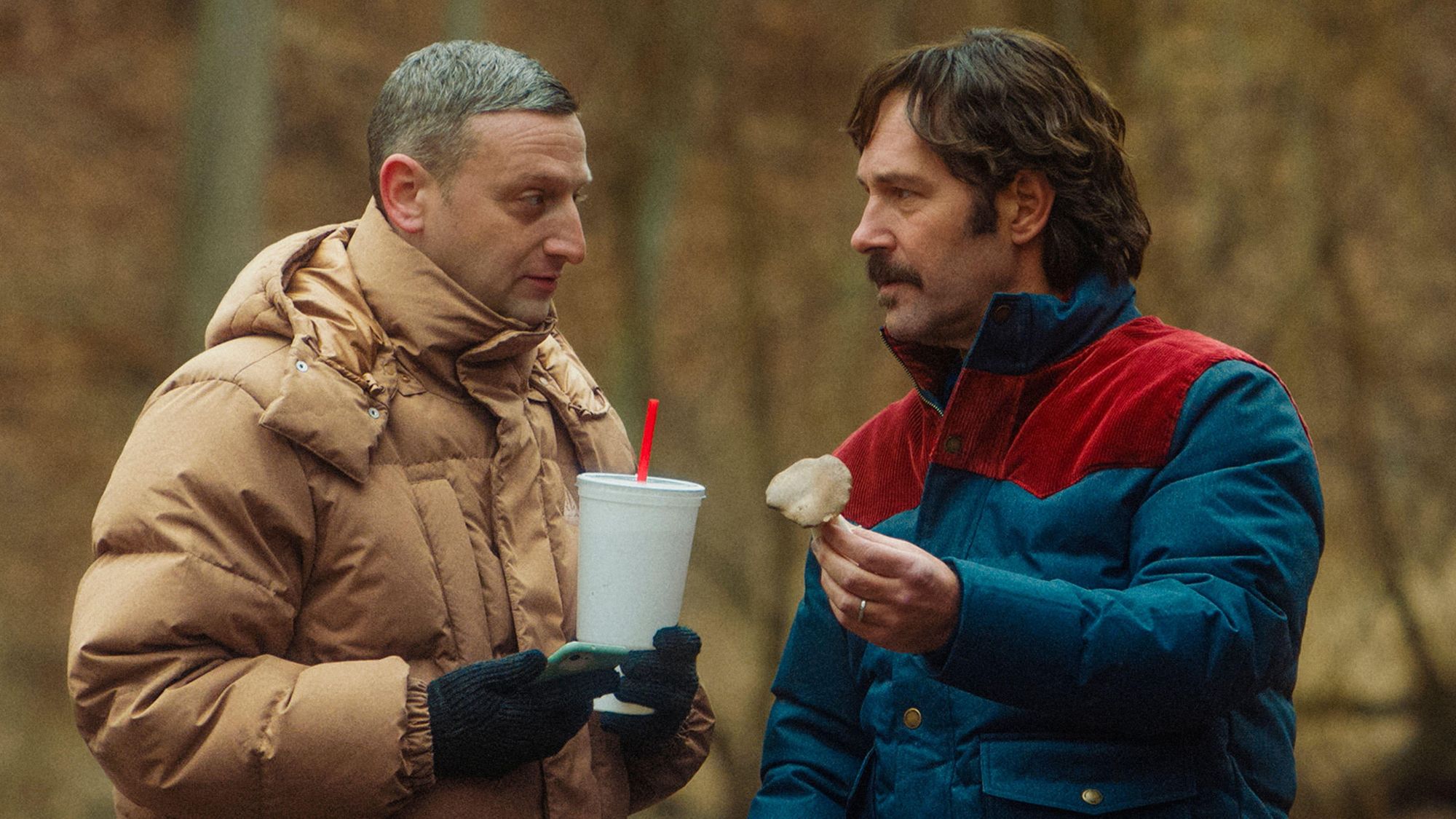 Friendship: 'bromance' comedy starring Paul Rudd and Tim Robinson
Friendship: 'bromance' comedy starring Paul Rudd and Tim RobinsonThe Week Recommends 'Lampooning and embracing' middle-aged male loneliness, this film is 'enjoyable and funny'
-
 The Count of Monte Cristo review: 'indecently spectacular' adaptation
The Count of Monte Cristo review: 'indecently spectacular' adaptationThe Week Recommends Dumas's classic 19th-century novel is once again given new life in this 'fast-moving' film
-
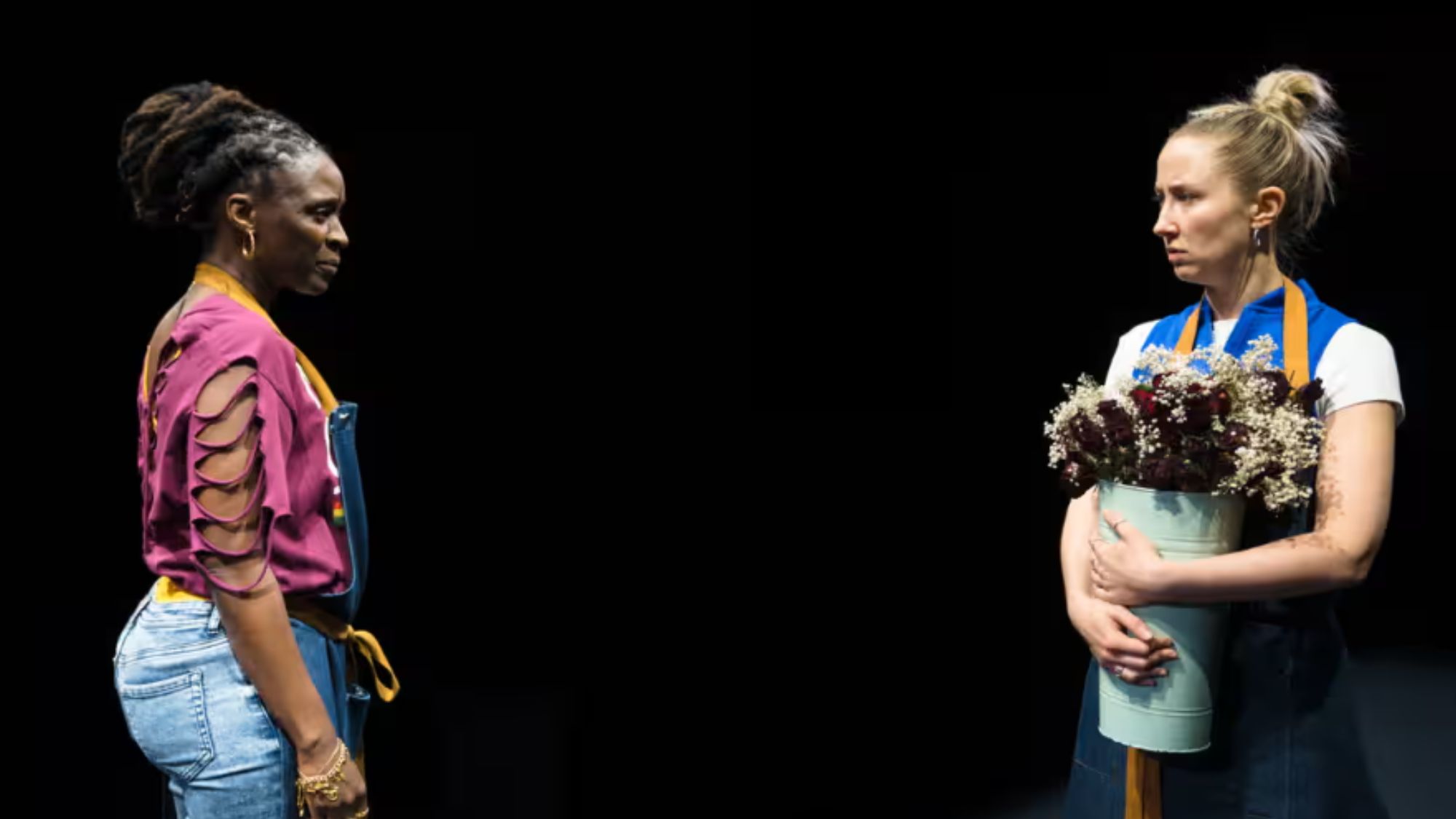 Death of England: Closing Time review – 'bold, brash reflection on racism'
Death of England: Closing Time review – 'bold, brash reflection on racism'The Week Recommends The final part of this trilogy deftly explores rising political tensions across the country
-
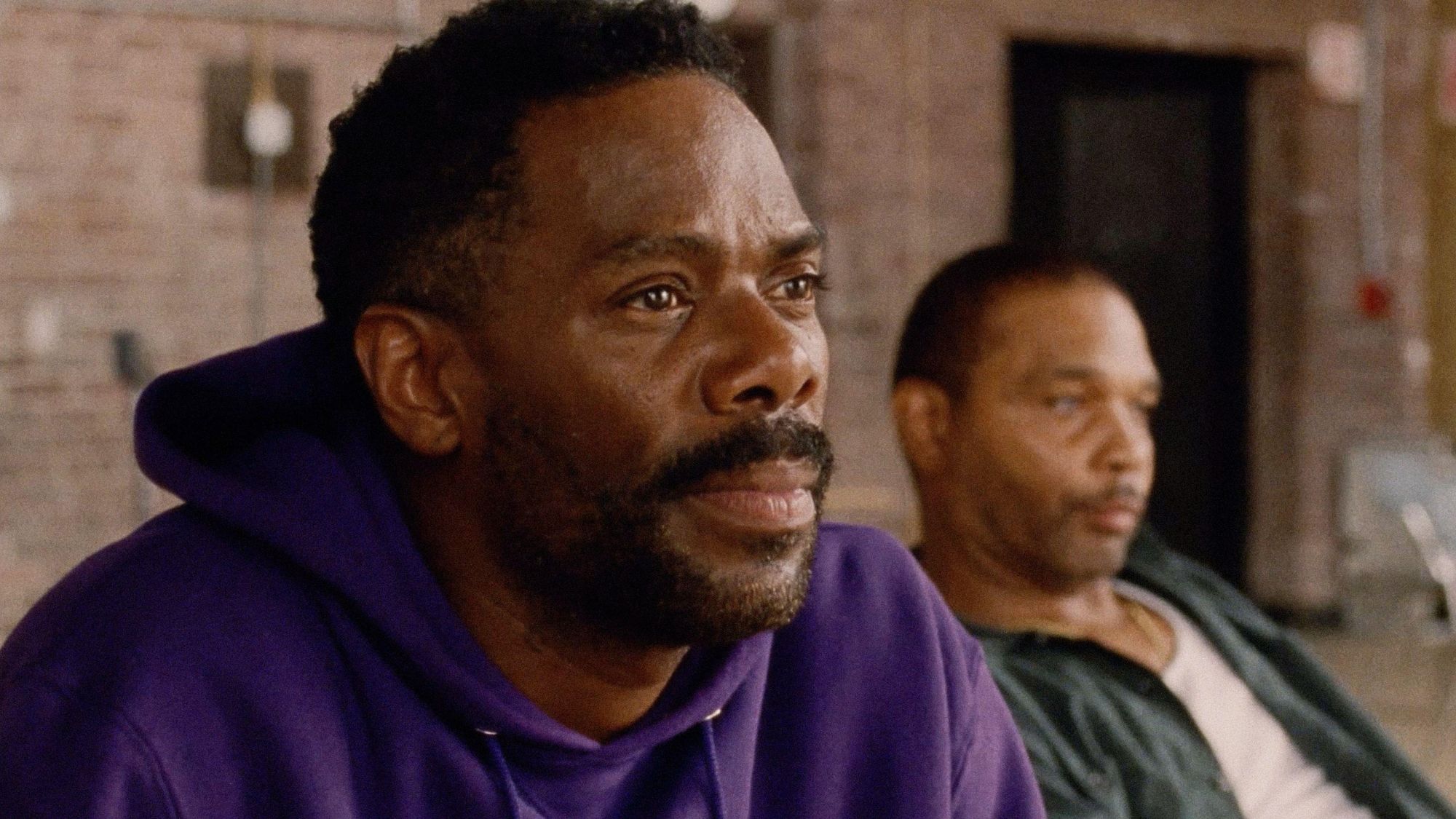 Sing Sing review: prison drama bursts with 'charm, energy and optimism'
Sing Sing review: prison drama bursts with 'charm, energy and optimism'The Week Recommends Colman Domingo plays a real-life prisoner in a performance likely to be an Oscars shoo-in
-
 Kaos review: comic retelling of Greek mythology starring Jeff Goldblum
Kaos review: comic retelling of Greek mythology starring Jeff GoldblumThe Week Recommends The new series captures audiences as it 'never takes itself too seriously'
-
 Blink Twice review: a 'stylish and savage' black comedy thriller
Blink Twice review: a 'stylish and savage' black comedy thrillerThe Week Recommends Channing Tatum and Naomi Ackie stun in this film on the hedonistic rich directed by Zoë Kravitz
-
 Shifters review: 'beautiful' new romantic comedy offers 'bittersweet tenderness'
Shifters review: 'beautiful' new romantic comedy offers 'bittersweet tenderness'The Week Recommends The 'inventive, emotionally astute writing' leaves audiences gripped throughout
-
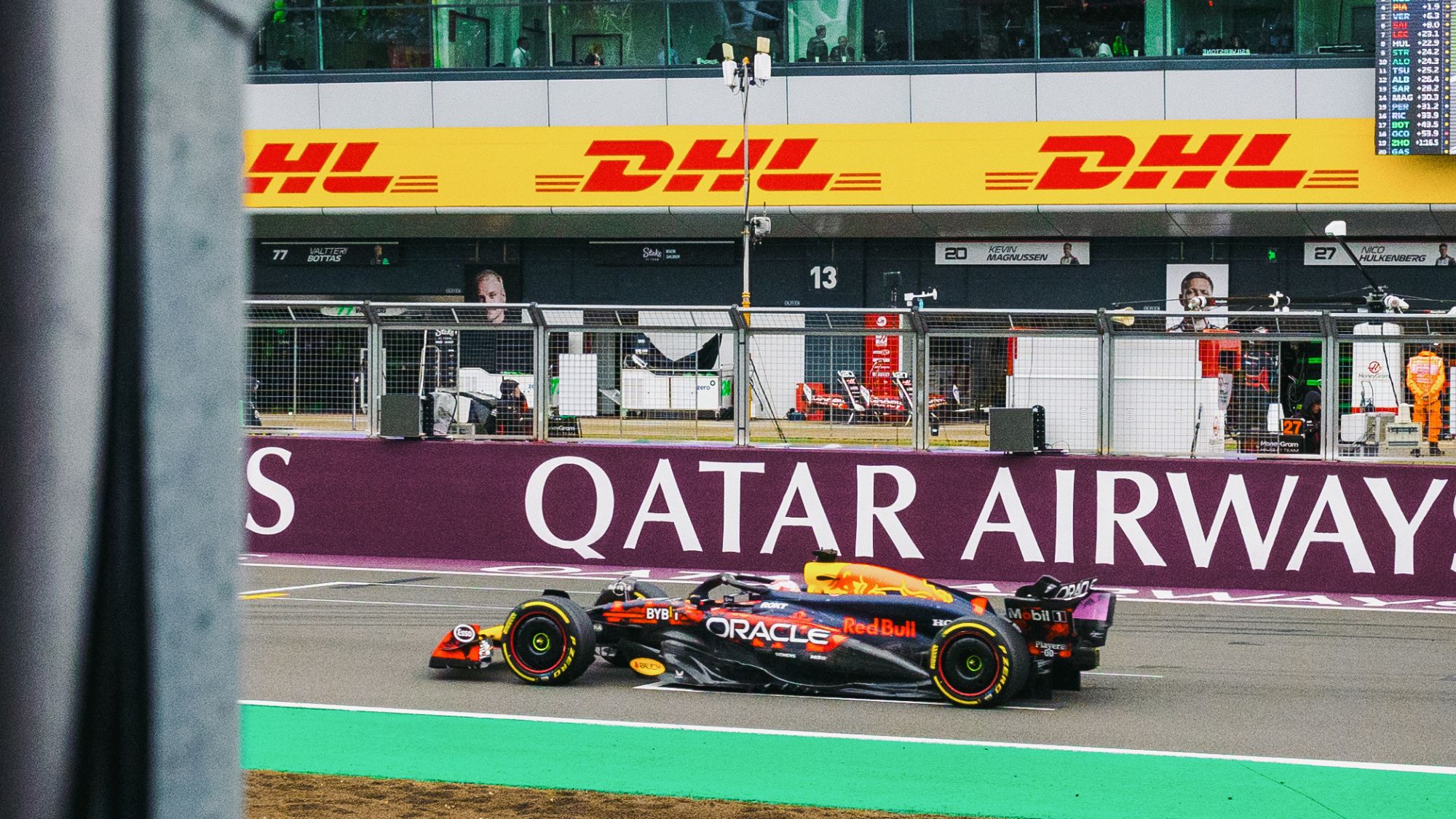 How to do F1: British Grand Prix 2025
How to do F1: British Grand Prix 2025The Week Recommends One of the biggest events of the motorsports calendar is back and better than ever